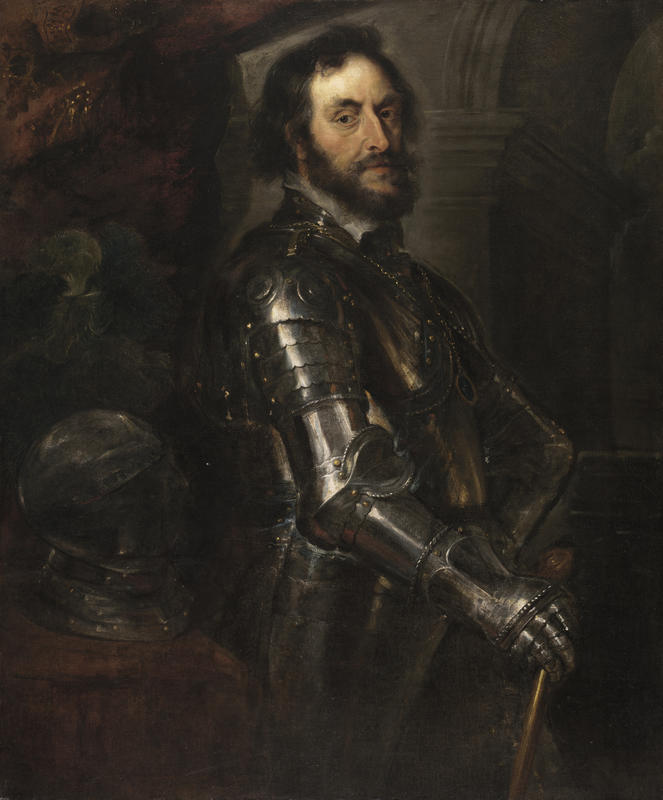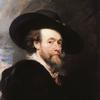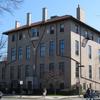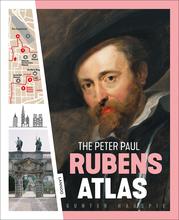More about Thomas Howard, Earl of Arundel
- All
- Info
- Shop

Sr. Contributor
Thomas Howard was either the 2nd, 14th or 21st Earl of Arundel, depending on how one views the hierarchy of all those earldoms; he was also an Earl of Surrey and Norfolk.
In this painting by Peter Paul Rubens, he is depicted as the Earl Marshal of England (yes, another earl!) Howard was a well-known collector of art, so naturally he was also known as the “Collector Earl”, but maybe this referred to his collecting of earl titles. In reality, Thomas was a sophisticated and enthusiastic art patron; if he were around today, he would probably be getting invites to the Met Gala between being wooed by museums around the world interested in the more than 700 paintings, marble sculptures, prints, and drawings he had amassed during his lifetime. Many of the statues and inscribed sculptures were given to what is now the Ashmolean Museum at Oxford University.
Besides being an avid art collector, Thomas also seemed to have a knack for getting himself into trouble, usually with people in power, even though he himself was a member of the titled aristocracy. In 1621, he was sent to the Tower of London for insulting Lord Spencer during a meeting of the House of Lords. In 1627, he was again imprisoned in the Tower after his son Henry married Lady Elizabeth Stewart without first being approved by the king. Apparently, Henry and Lady Elizabeth shared no responsibility for this marriage, which of course, is entirely possible during the 17th century.
This portrait was one of over a thousand paintings that Rubens created during his lifetime and is on display at the Isabella Stewart Gardner Museum in Boston; the oil study he did for this painting hangs in the National Portrait Gallery in London. Thomas probably met Rubens around or before 1620 as Rubens had painted a portrait of his wife, Alethea Talbot, during that year. This portrait of Thomas Howard was likely commissioned by Howard himself between 1629 and 1630, but for unknown reasons remained in the possession of Rubens until he died in 1640.
Thomas is known to have established the first major art collection in England, which he installed in galleries at his home, Arundel House, in London. During his travels to Italy, he personally bought Roman and Greek sculptures, as well as a large number of drawings. His collecting habits likely influenced other English nobles to expand their own art collections, which in turn would lead to the many museums and galleries that now exist in the U.K. So even though Thomas did pretty well with his earldoms, he did even better in his art collecting.
Sources
- "10301." Person Page. Accessed May 08, 2019. http://www.thepeerage.com/p10301.htm#i103009.
- "GREEK AND ROMAN SCULPTURE." GREEK AND ROMAN SCULPTURE | Ashmolean Museum. Accessed May 08, 2019. https://www.ashmolean.org/greek-and-roman-sculpture.
- Projects, Contributors To Wikimedia. "Entry in Dictionary of National Biography." Wikisource, the Free Online Library. March 24, 2018. Accessed May 08, 2019. https://en.wikisource.org/w/index.php?title=Howard,_Thomas_(1586-1646)_….
- "The LIFE of THOMAS HOWARD, Earl of ARUNDEL and SURREY, Earl-Marshal of ENGLAND." New London Magazine, 1785-1789 (02, 1789): 68-71. https://search.proquest.com/docview/5728202?accountid=14784.
- "Thomas Howard, 14th Earl of Arundel, 4th Earl of Surrey and 1st Earl of Norfolk." National Portrait Gallery. Accessed May 08, 2019. https://www.npg.org.uk/collections/search/person/mp00145/thomas-howard-…
- "Thomas Howard, 21st Earl of Arundel." Geni_family_tree. October 05, 2018. Accessed May 08, 2019. https://www.geni.com/people/Thomas-Howard-21st-Earl-of-Arundel/60000000….
- White, Christopher. Anthony Van Dyck Thomas Howard, the Earl of Arundel. Malibu (Calif.): J. Paul Getty Museum, 1995.

Contributor
One of Rubens’s major patrons, Thomas Howard was one of the most prominent art collectors of the seventeenth century, enough to be compared by Rubens’s words to “the four evangelists.”
Howard’s portrait was one of the few real life people in Rubens oeuvre.
Howard was born July 7, 1585 in Essex. Son of the first earl of the Howard line, Philip Howard, he got his education from Westminster and Trinity College at Cambridge. The Howards were nobles without titles until April 18, 1604, when the earldom of Arundel and the baronies of his grandfather Thomas, duke of Norfolk, were back in their hands.
As a statesman, Howard had a mixed record. He served as a diplomat and statesman under Charles I and enjoyed the prestige of the position until, as a general, he received a crushing defeat in 1635. Howard never saw much popularity in England, staying abroad more and more starting in 1641, when he escorted Marie de Medici to Holland. He was also terrible with money, losing fifty-four thousand pounds he donated to the King’s cause in the English Civil War, causing him to go bankrupt in 1639, splitting up his fortunes and consequently his large art collection, with a substantial part donated to Oxford in 1667. He died in Padua on October 4, 1636.
The one, if any, redeeming factor in his life, was his mutual respect and friendship with Peter Paul Rubens, a longtime benefactor of Howard’s patronage. The pair first met in Flanders, but the relationship didn't yet flourish due to the tumult of their occupations as statesman and artist, respectively. However, upon Rubens’s diplomatic visit to London in 1629, the pair reacquainted themselves rather quickly. Rubens admired Howard’s large sculpture collection, was finally in London, and painted the latter’s wife, Alathea Talbot, nine years prior. Commissioning a portrait was a no-brainer.
Rubens chose to portray the Earl as a warrior, a profession that Howard failed at spectacularly. He intended it not to show his physical and military prowess, but to emphasize what he saw as knightly values inherent within Howard, adorning him with the Order of the Garter and a baton signifying the gravitas of being the Earl Marshal of all England.
The painting was not actually finished in 1630 as it is shown here. The lower half of Howard, the background, and the items to the left were penciled in and completed by another artist at a later date. The Flemish painter left for Antwerp without finishing the job. Jerk.
Sources
- “2nd Earl of Arundel, Thomas Howard.” 2017. Oxford Reference. June 16, 2017. http://www.oxfordreference.com/view/10.1093/oi/authority.20110803095427….
- Britannica, The Editors of Encyclopaedia. 2018. “Thomas Howard, 2nd Earl of Arundel.” Encyclopædia Britannica. Encyclopædia Britannica, inc. September 30, 2018. https://www.britannica.com/biography/Thomas-Howard-2nd-Earl-of-Arundel.















From Don Romero's review: (Howard) 'was sent to the Tower of London for insulting Lord Spencer during a meeting of the House of Lords'. So he insulted one of princess Diana's ancestors and went to jail over it...